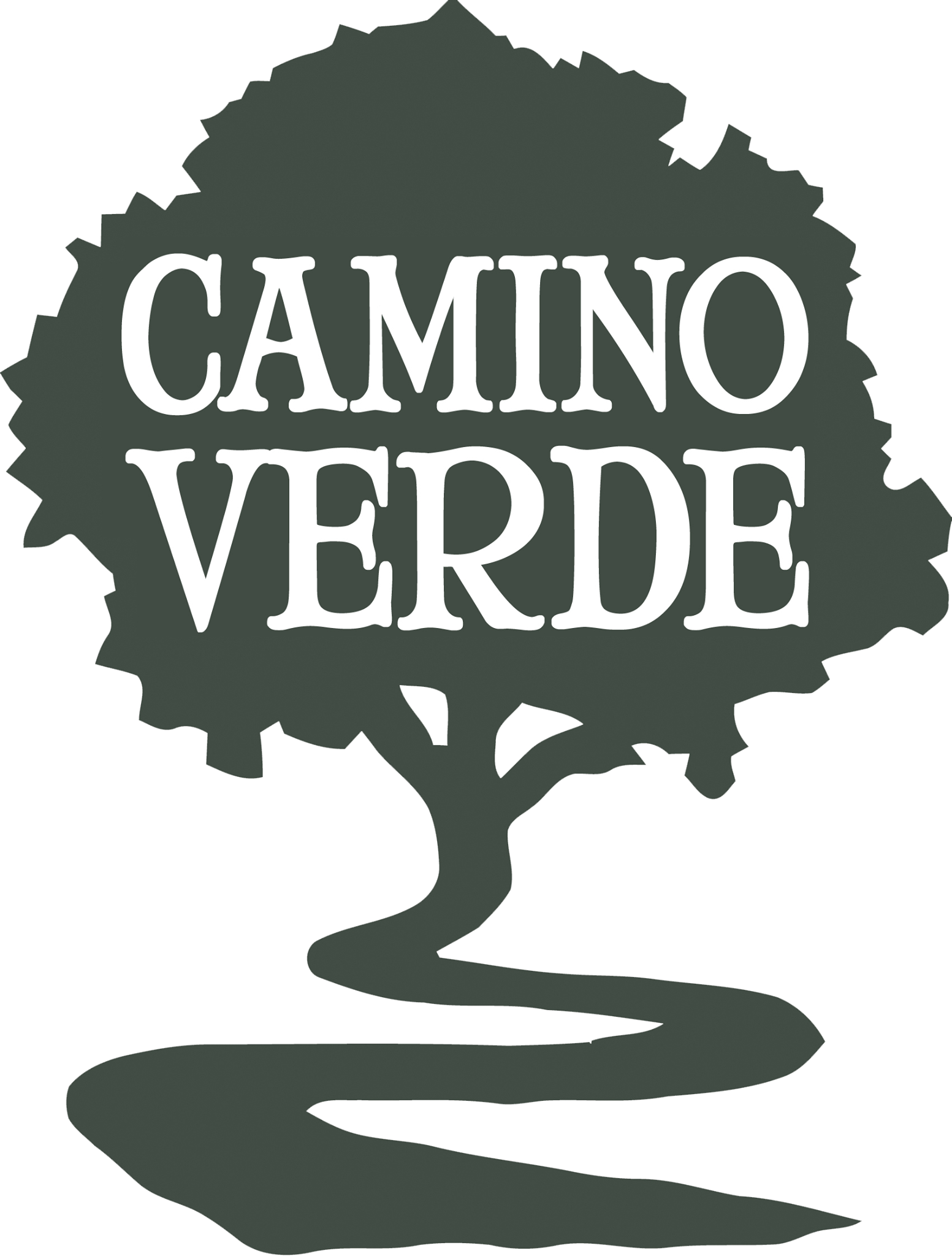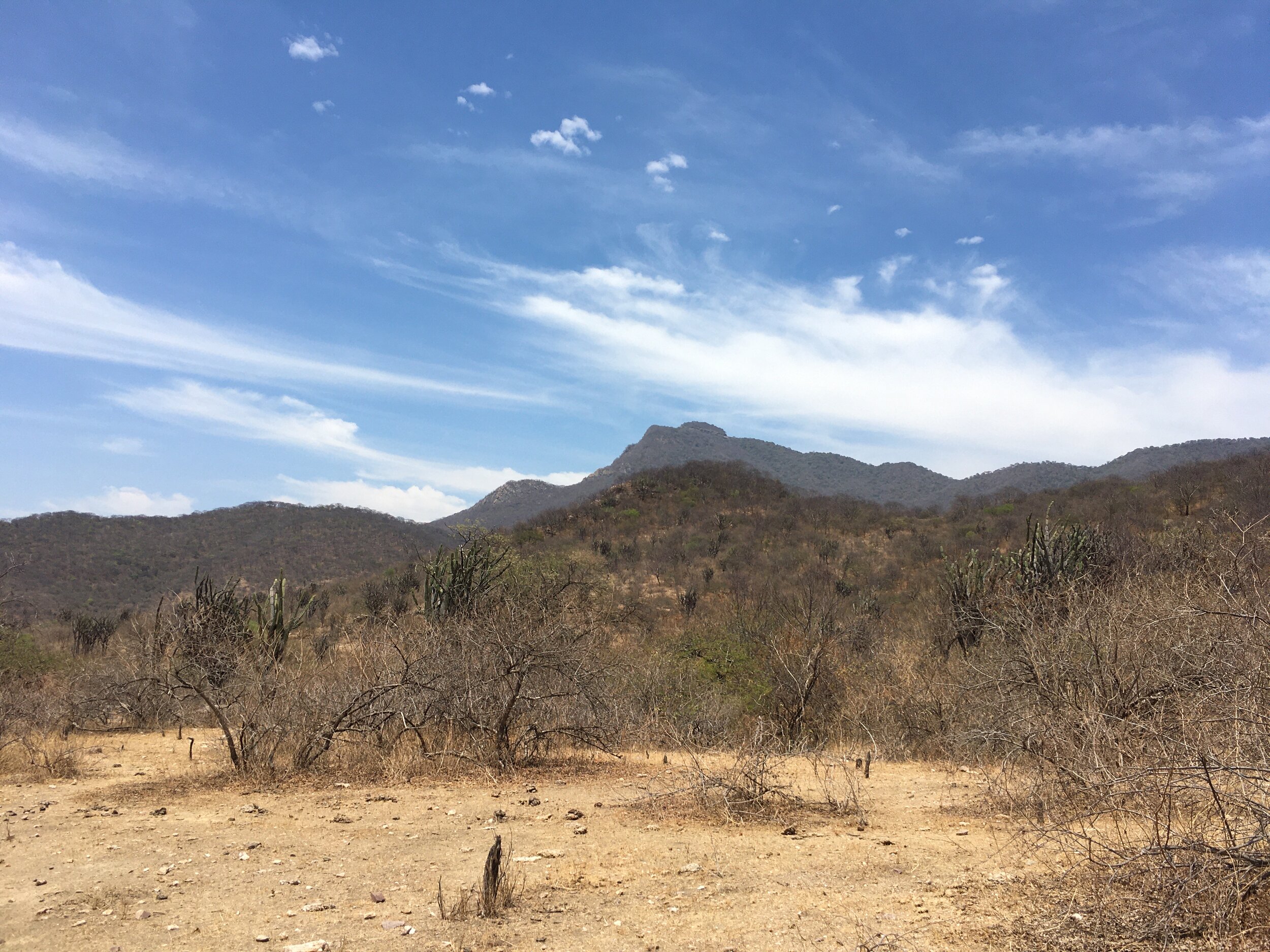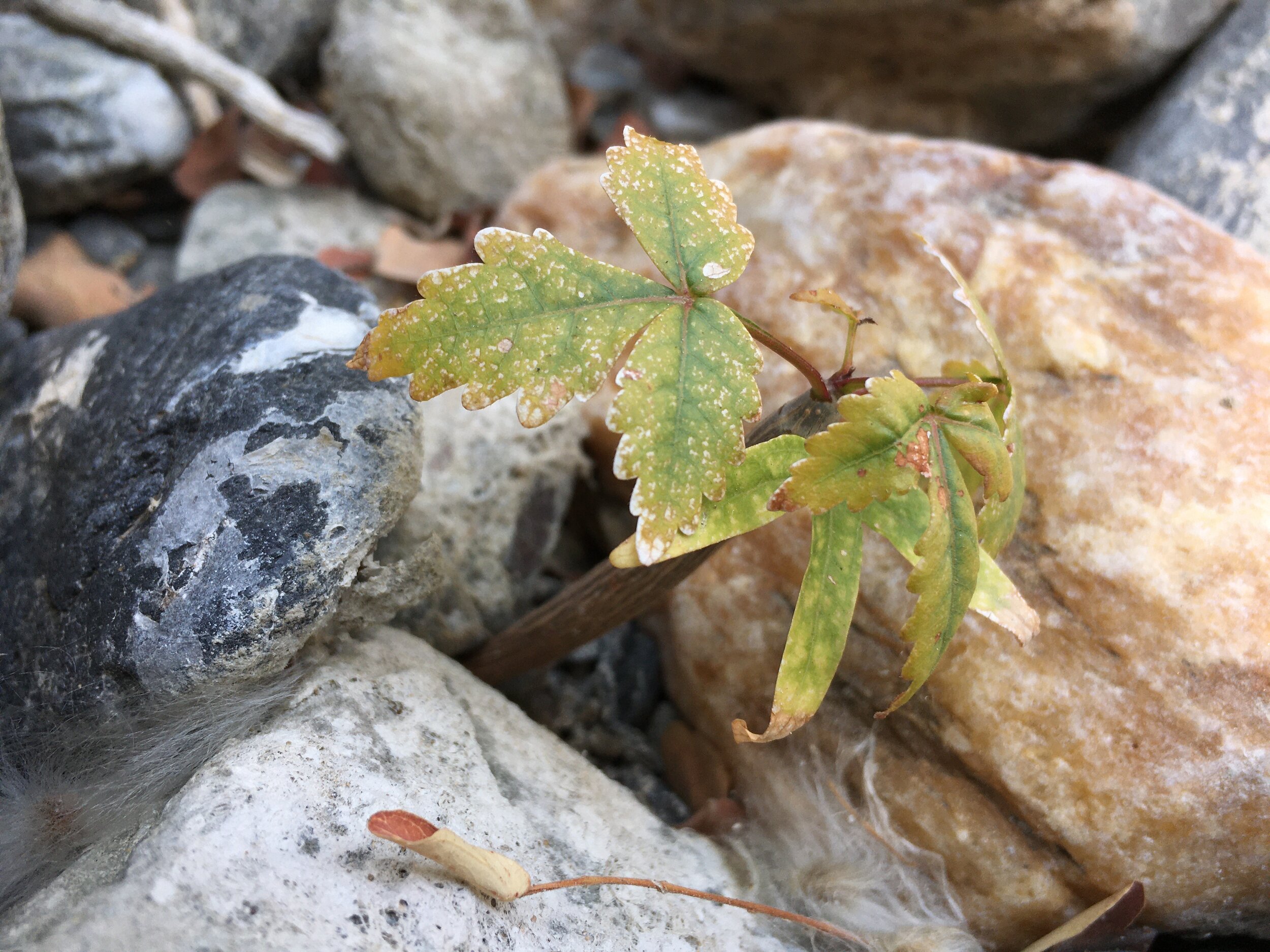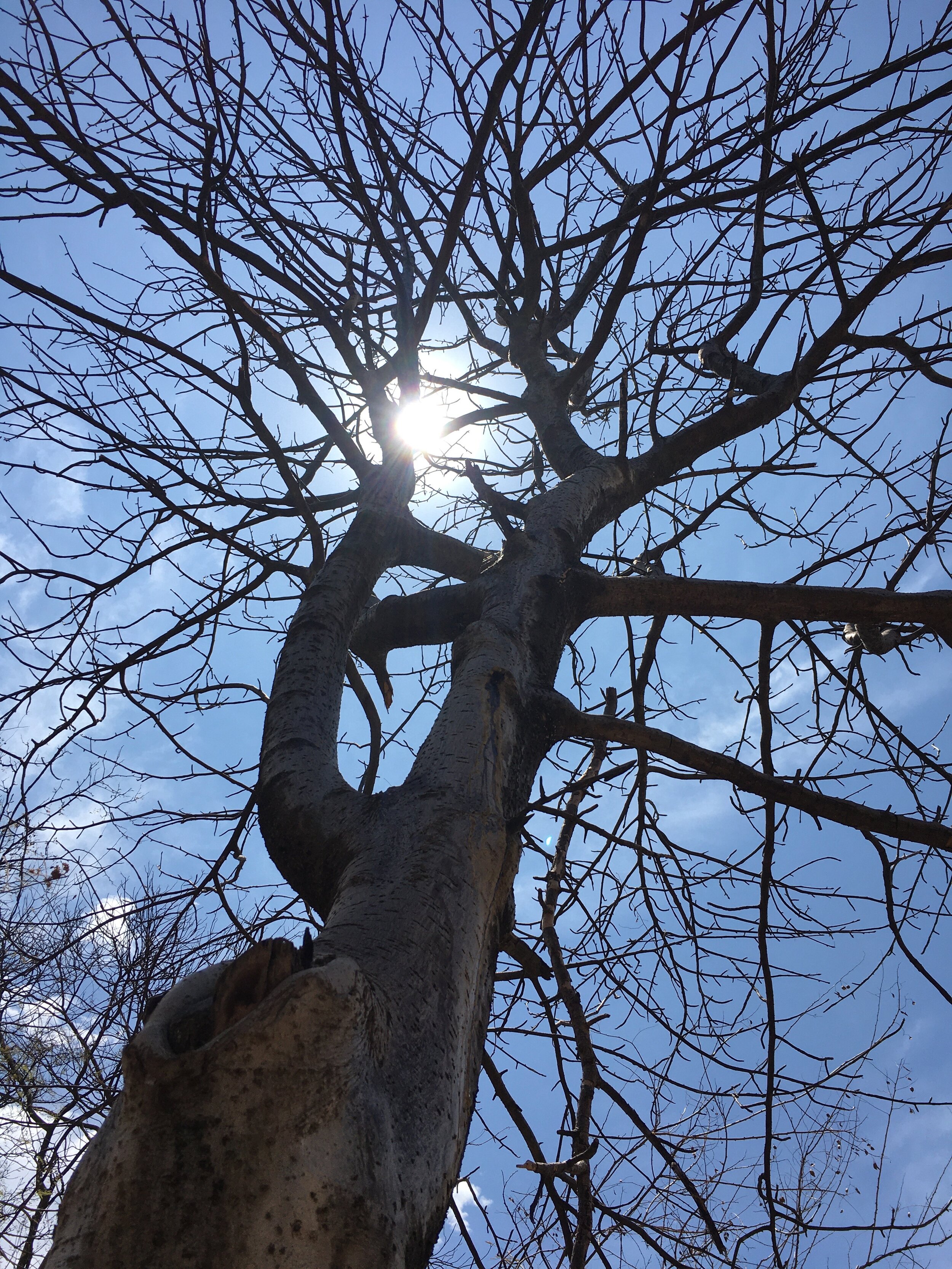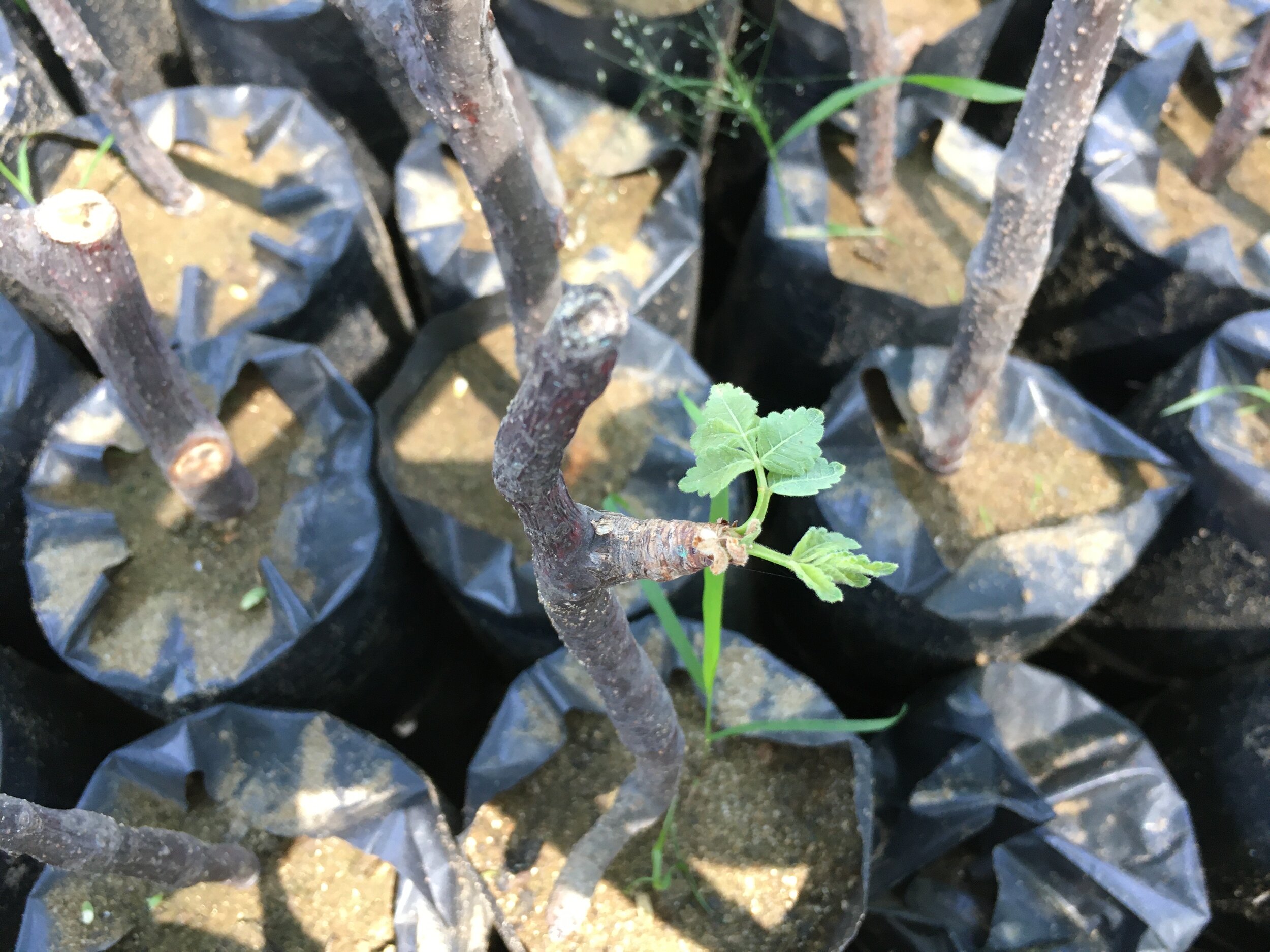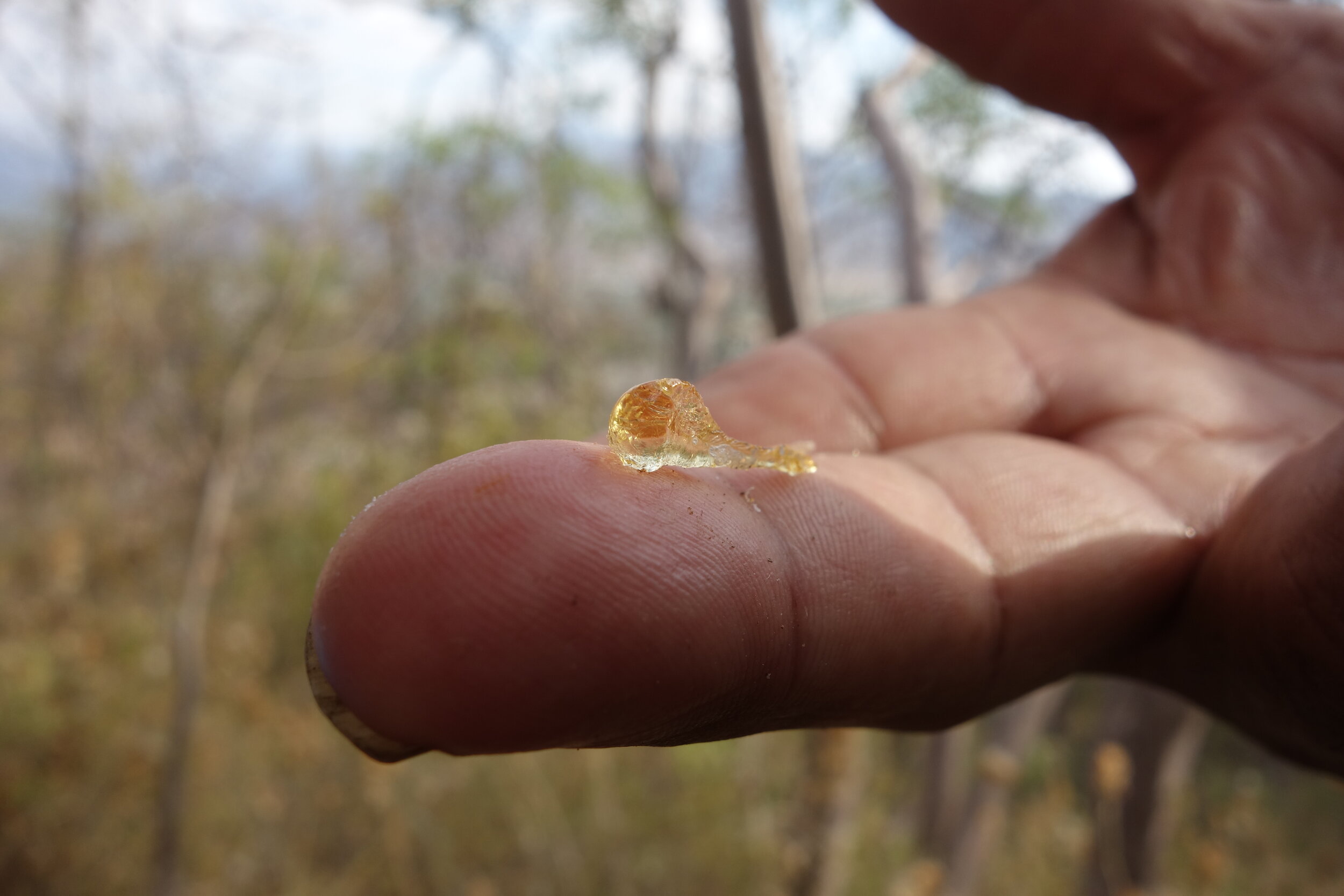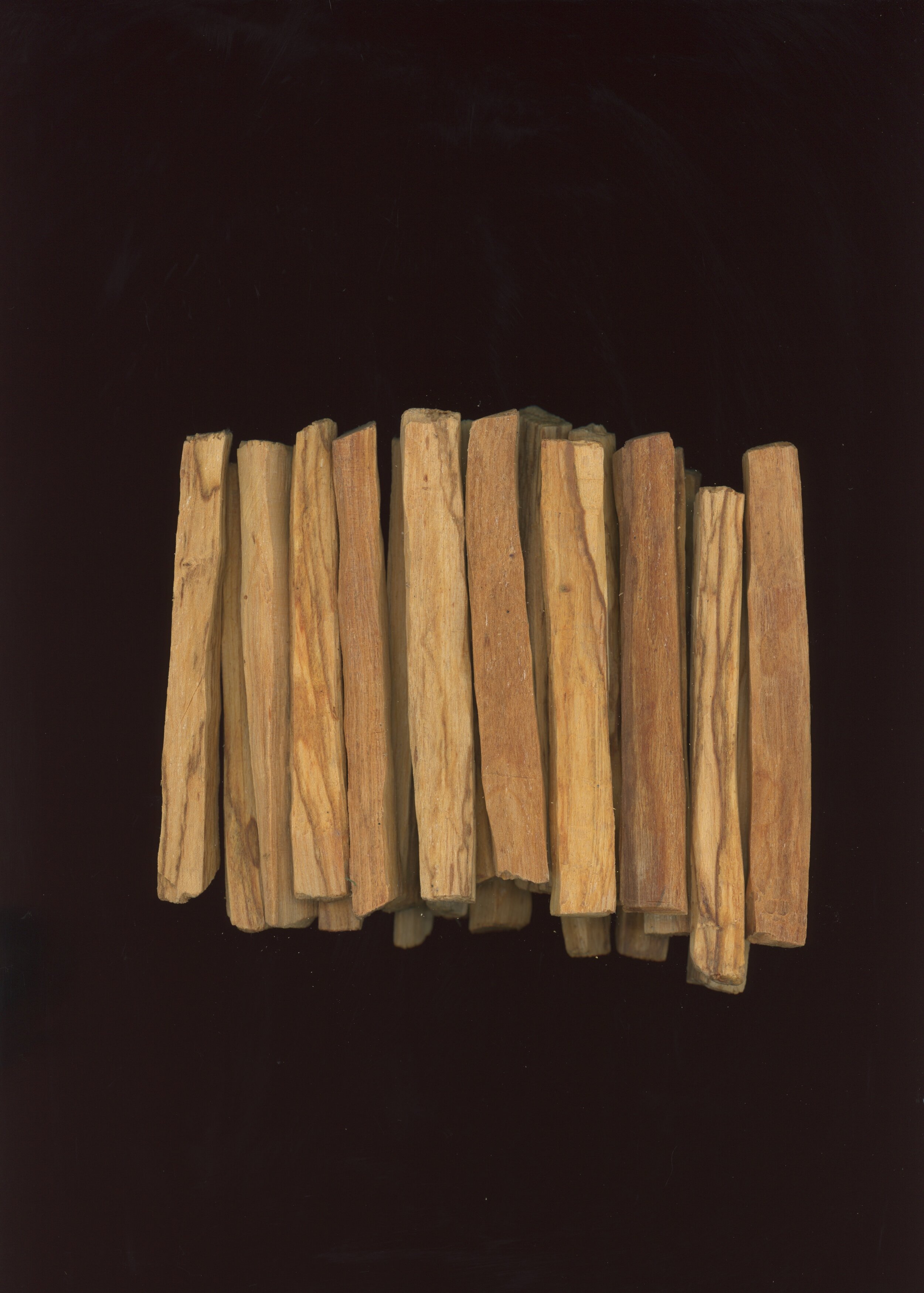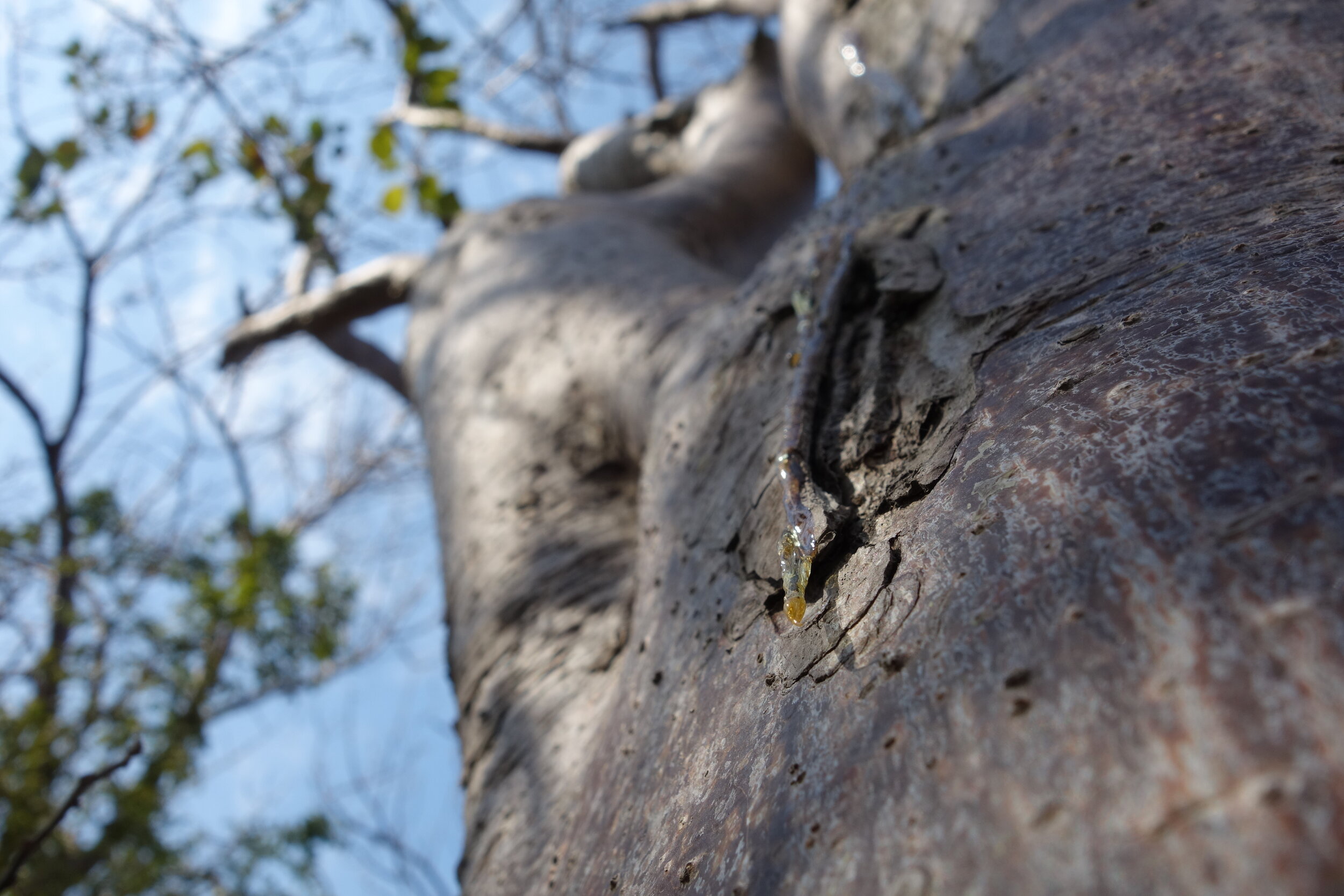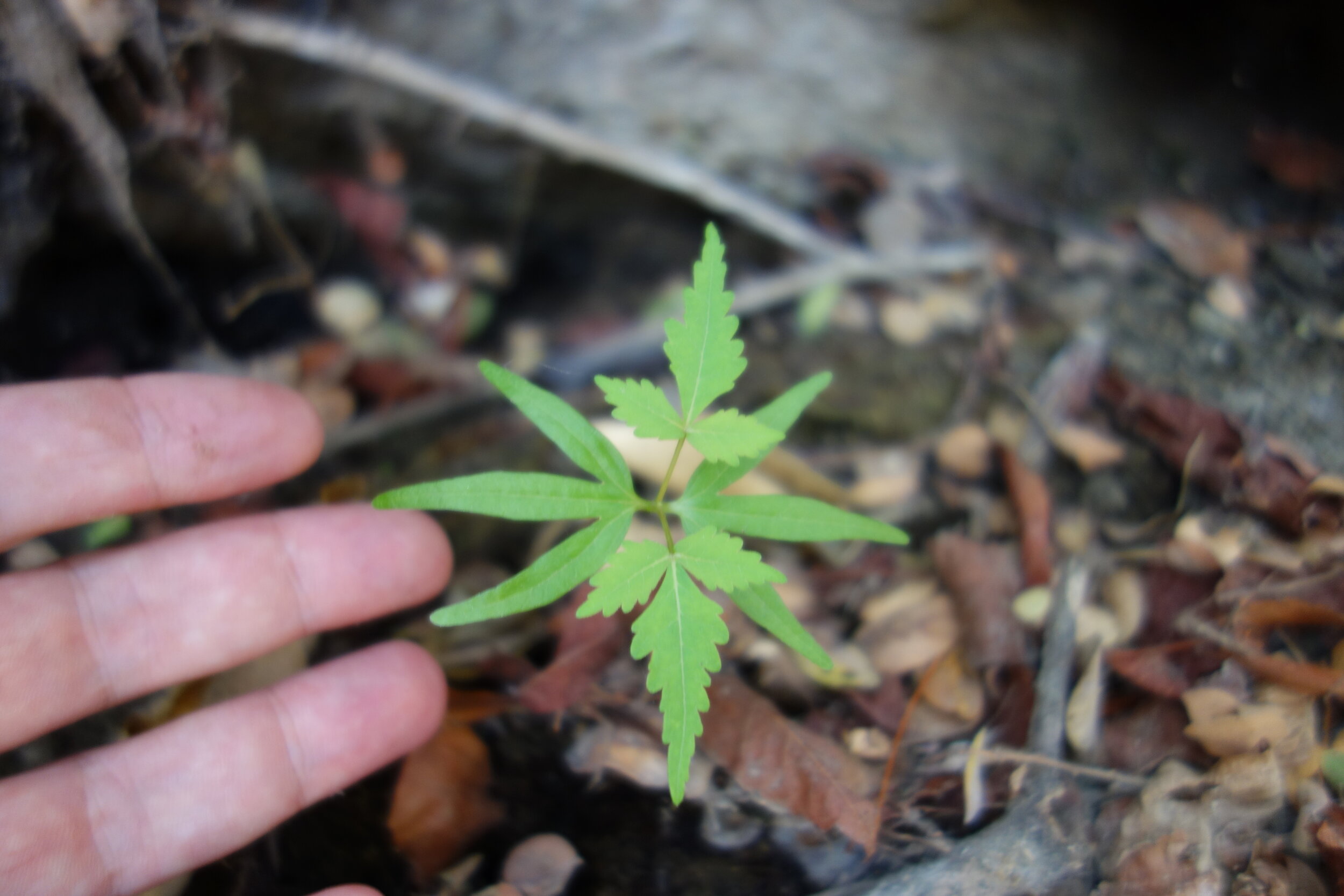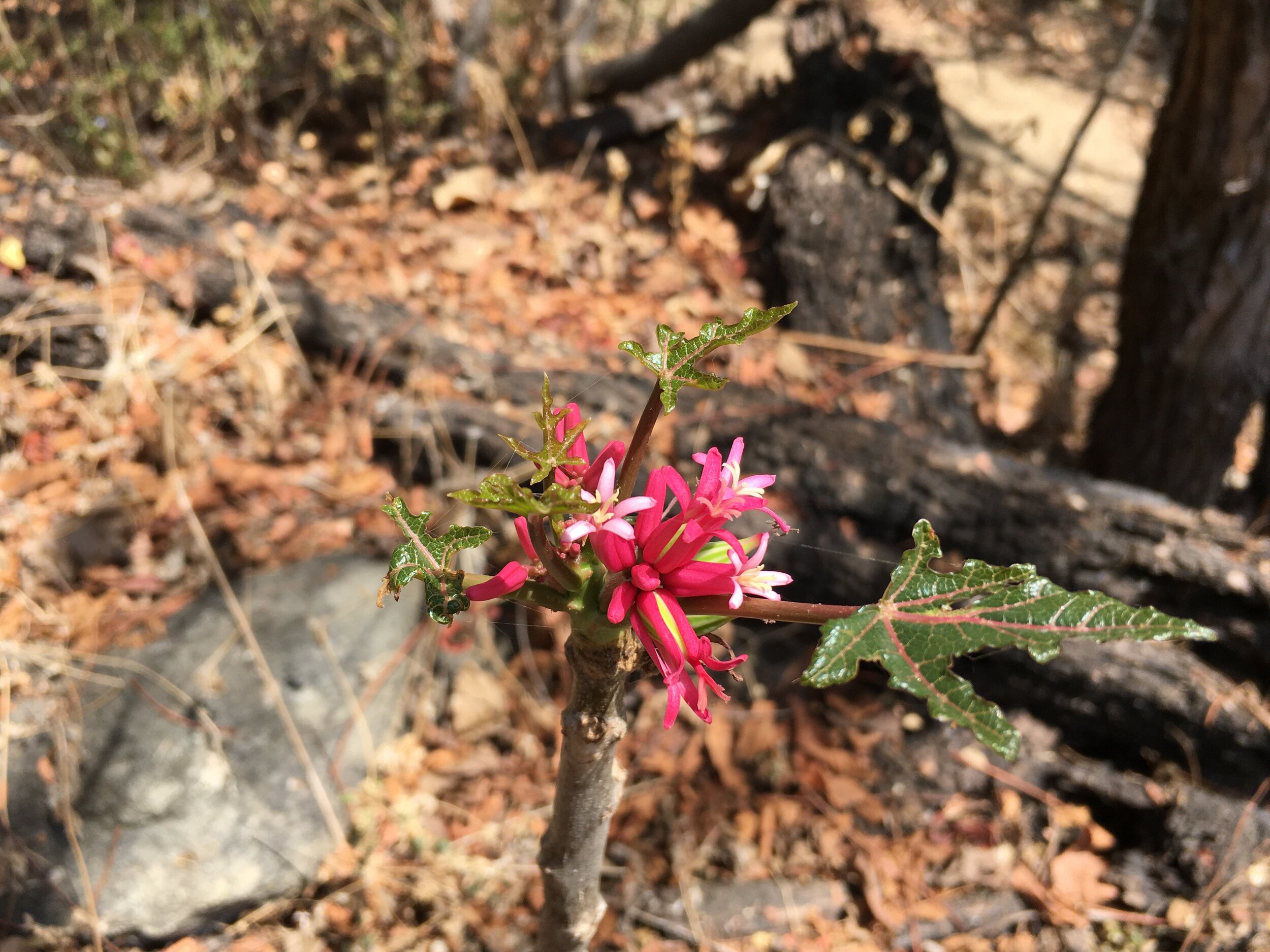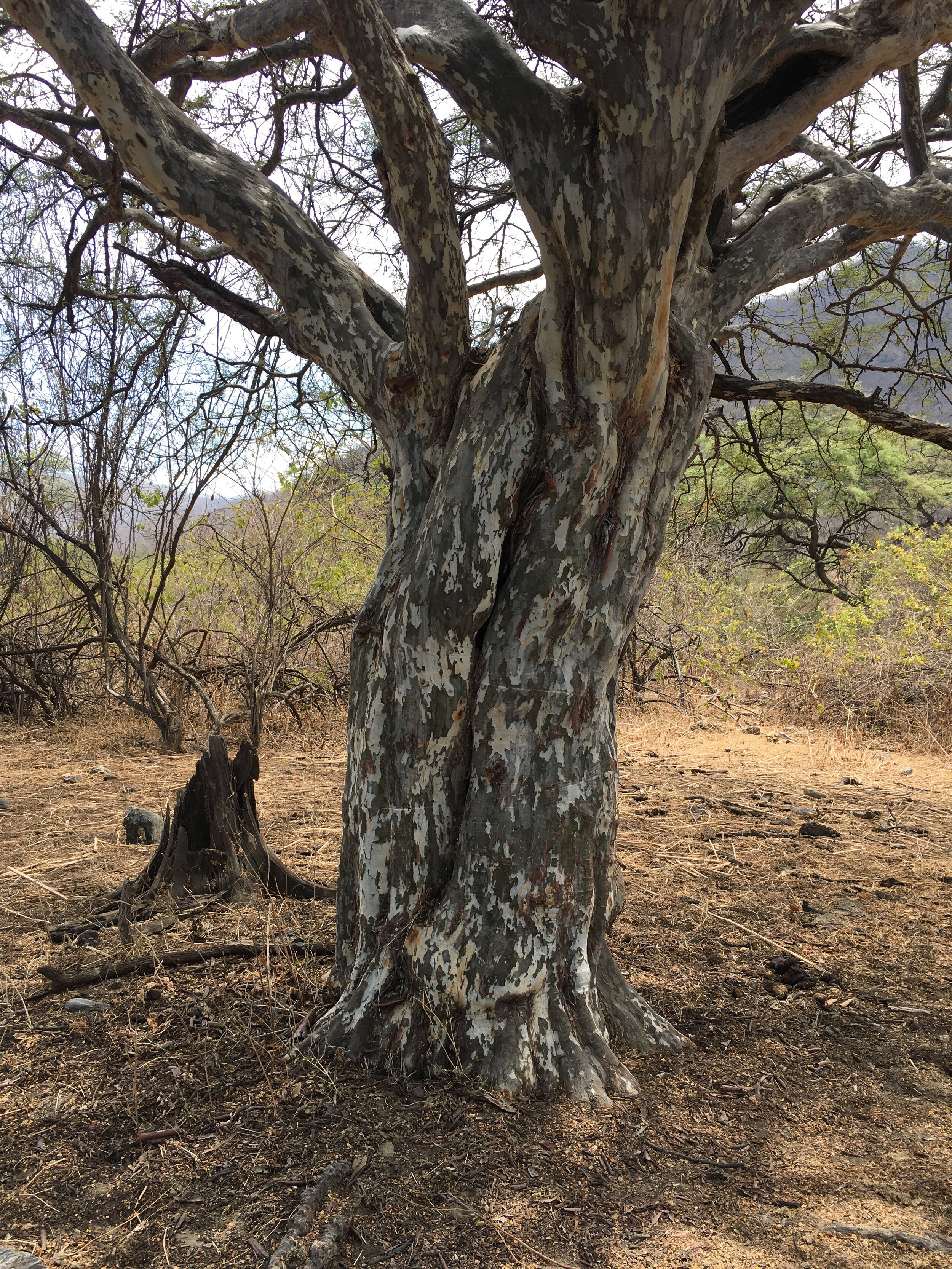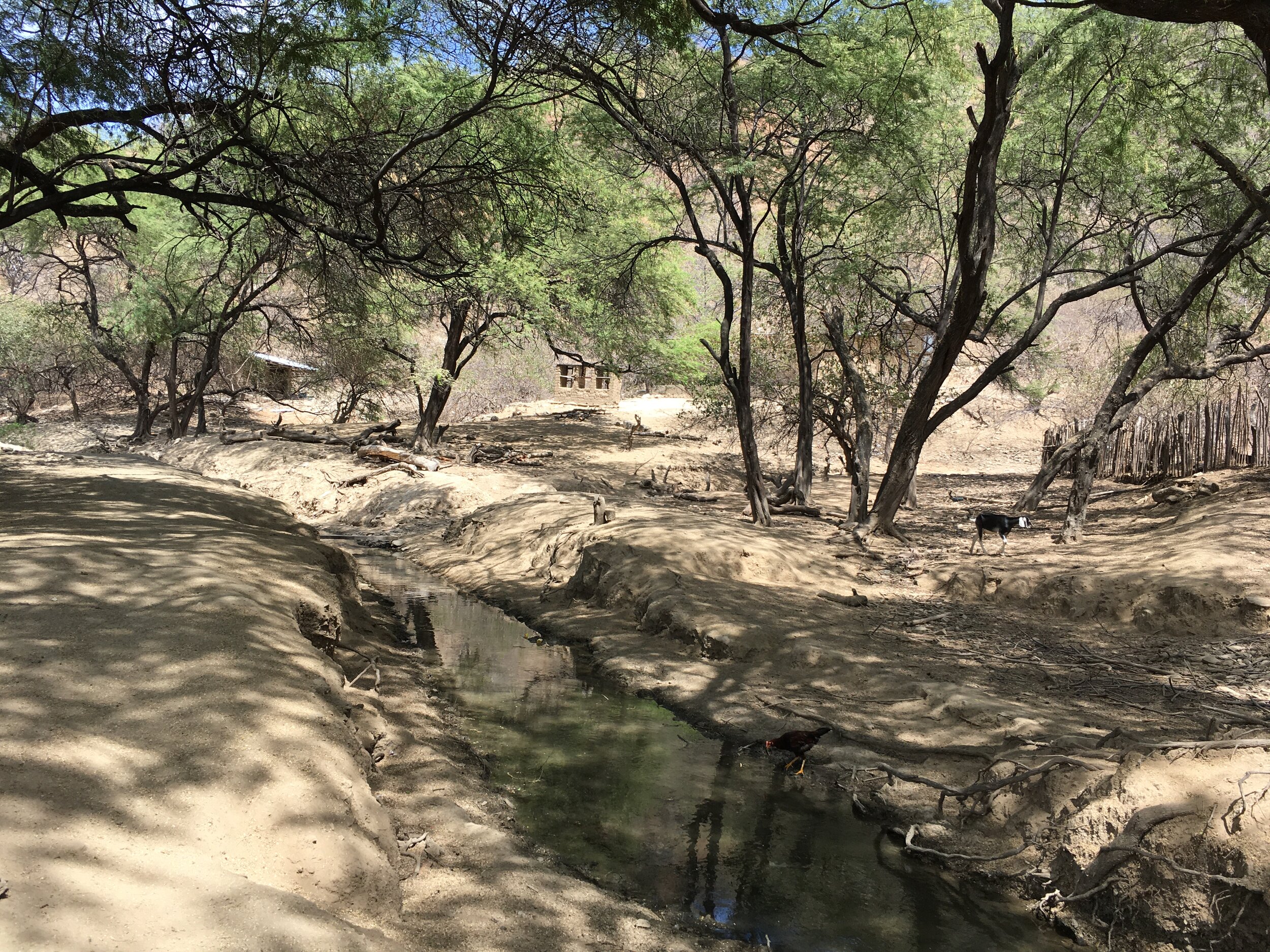Palo Santo (Bursera graveolens): Keystone Species of Peru's Tropical Dry Forest
Text and Photos by Robin Van Loon, Executive Director of Camino Verde
This immersive exploration of Palo Santo’s keystone role in the fragile, unique forest where it is found is a product of Camino Verde’s commitment to the people, places, and plants behind some of the best essential oils of Peru.
The tropical dry forest of Piura, Peru.
The smell is so unique yet has become so familiar. Palo Santo – holy wood, Bursera graveolens – was almost unknown outside of Peru and Ecuador’s borders as recently as the 90’s. But in 2020 Palo Santo is subject to controversy and continues to be shrouded in mystery and confusion. Is it endangered? How endangered? Where does it come from? Are people cutting the trees down? Is it true that the only aromatic wood is that of naturally fallen trees collected from the ground?
Palo Santo is therapeutic, special, unique – and subject to a wide variety of misconceptions. In November 2019, Camino Verde dove into the region of Piura, Peru to strengthen our sourcing relationships with communities that are working hard to ensure the robust health of Palo Santo and the stunning landscape where it is found – the Tropical Dry Forest of northern Peru.
Tropical Dry Forest: the Landscape
Some of Earth’s most dynamic ecosystems are at the edges where different realities meet. What can you find at the transition zone between the coastal desert of Peru, one of the world’s driest, and the foothills of the Andes, the second highest mountain range? – where rushing rivers run down from tropical glaciers, and the last rains discharge and the clouds evaporate before reaching the West Andean flank, the rain shadow side.
What do you get when the cold water Humboldt current – the other key factor in the exceptional dryness and socked-in cloudiness of Peru’s coastal desert – meets the equatorial ocean current that further north gives the verdant glow to so much of Ecuador’s coast? Also, what do you get when this edge zone happens to be adjacent to one of the lowest passes in the Peruvian Andes separating the coast from the Amazon?
You get an ecosystem that is rare – and becoming rarer. You get the Tropical Dry Forest of South America, the landscape that Palo Santo calls home.
The forested Andean foothills of the Piura region are a scene of remarkable biodiversity, the collusion of a mix of different ecosystems that meet but are filtered through the prism of a particular place’s own demands and peculiarities. There are wild trees found here that are also naturally found in Mexico, in Brazil, in Argentina. The history of the Earth is long. There were once jaguars here. There are still snakes, deer, peccaries, and puma, all found also in the Amazon. Tiny streams teaming with fish fill generously to become rivers in the brief rainy season – and sometimes erupt tragically, cataclysmically in the El Niño years.
Most of the tree species have deep tap roots against the drought and strong resins to protect themselves from relatives of Amazonian termites. They are pollinated by Meliponas, cousins to Amazonian stingless bees. The giant kapok tree – deemed the mother of the forest by many Amazonian tribes – has a wild relative here of the same genus.
And a tree that is botanically close to Frankincense, Myrrh, and Copal covers the hilltops and literally scents the breeze just by dropping its branches.
“The Tumbes-Piura dry forests ecoregion is in the neotropical realm, in the tropical and subtropical dry broadleaf forests biome. It is part of the Tumbes-Chocó-Magdalena biodiversity hotspot, one of 25 biogeographic regions globally that have a significant reservoir of biodiversity under threat from humans... The fauna and flora of the global ecoregion have high levels of endemism.”
Palo Santo: Keystone Tree Species
To be clear, when we say Palo Santo in this missive we mean the species known to biology as Bursera graveolens, member of the namesake genus from the tropically-significant botanical family Burseraceae, or “incense tree family.” In Peru, Mexico, Burkina Faso, Greece, Ethiopia, Ecuador, Guatemala, Somalia, Brazil, Oman, and elsewhere, aromatic species from the family Burseraceae are used in traditional practices that are millennia old. In many of these places the trees are the subject of subtle cultural knowledge addressing respectful and sustainable harvest practices, what we might now call forest management, or the intimate knowledge of complex webs of ecological relationships.
That sounds interesting, but no background summary can prepare you for the smell of Palo Santo. Do you remember the first times you smelled it? If you are older than the 21st century (above the age of 20 at the time of this post), you probably recall the circumstances in which you first encountered a smoking smudge stick giving off a warm, sweet smell somewhere near the convergence of caramel, wood, citrus, and vanilla. Or none of the above. The smell of palo santo is not something you mistake for something else.
In several but not all of the Tropical Dry Forests of Piura, Peru (as well as Tumbes, Peru, and the southern regions of Ecuador) Palo Santo can be found at remarkable densities – up to 300 trees per hectare – meaning at higher distribution densities than many monocultural fruit plantations.
But this forest is far from a monoculture. Palo Santo’s branches intertwine with those of other beautiful and useful trees that have helped sustain large human settlements in these valleys and hills since long before the Inkas, for at least the last five thousand years. In the 21st Century, many of these trees, including Palo Santo, are coming under increased pressure from modern extraction that in a sense is the product of forgetting, of the falling out of practice of traditional knowledge.
The Productive Ecology of Palo Santo
Each of the images above shows Palo Santo. Local communities recognize three distinct varieties of the tree – white, yellow, and black – each of which seems to prefer a respective soil type or position in the landscape. White is down below on the plains and valley bottoms, black is on the hilltops, yellow is in between. White is so soft in scent as to be disappointing; the yellow is the classic scent we know as Palo Santo; and black has a resinous, penetrating aroma that takes it up an octave in intensity. The black variety exudes the most and strongest smelling resin when wounded, and the white variety the least.
Natural regeneration of Palo Santo can be found in stream beds (as shown in the image here) where above- and below-ground water can help seedlings survive – but can kill these babies when the rivers rise violently in the rainy season. Natural regeneration also comes sprouting from out of the tree’s small fallen fruits, as from bird and squirrel droppings at the corresponding time of year. The fruit pulp contains a sweeter-smelling variant (with different chemical composition) of the essential oil found in the wood.
Though the majority of volunteer seedlings in the wild dry out and die at an early age, those individuals that are able to successfully take root do grow relatively quickly. By age 3 a tree might reach a couple meters in height and the thickness of a human forearm.
As a lightweight softwood, comparisons to balsa or cork come readily, and Palo Santo trees are not long lived. The end of most individuals comes before they surpass 35 cm (a foot) in diameter and usually long before their hundredth birthday. The vectors of mortality for Palo Santo are the wind, the shifting hillside soils in the rainy season, and the trees’ own weight, factors which alone or in combination lead to trees falling over uprooted or broken off at the base.
Termites can also sometimes play a roll in the trees’ structural collapse, but they are more of an issue post-mortem. Naturally fallen trees lying on the ground are the source of the most aromatic Palo Santo, but if left for too long only a corky pulp will remain, run through by black termite trails that make the wood less aromatic – as well as less visually attractive, and therefore less commercial.
Some sources erroneously report that only the wood from naturally fallen trees is aromatic – but how would a branch know if it broke off naturally versus being cut off? – and others wrongly report that the wood needs 4-10 years of forest floor time to cure to full aromatic potential. It is true, however, (and relevant to trade in the species) that the aromatic oil composition and content density of older woody tissues differs from that in the younger greenwood of branches and shoots.
Bursera graveolens and Homo sapiens
Palo Santo has been used ceremonially as an incense for a long time. Remains of the wood have been found in tombs alongside mummies throughout the territory that is now called Peru and its ritual use has persisted into modern times in most regions of the country as well as in Ecuador and Bolivia. Alongside Spondylus shells from the Ecuadorian coast and Bactris palm timber from the Amazon, Palo Santo has been part of a religious economy that pre-dates even the pre-Inka cultures.
That said, in the last hundred years Peru’s cultural landscape and land usage patterns have shifted in profound ways. In the 1950’s the old hacienda system was disbanded and massive estates relying on the labor of a sort of ongoing post-Conquest indentured servitude were split up – and the workers finally had access to land of their own. There was an abrupt shift in land tenure structures and management practices, and a breach with the past in other ways as well.
Some of Piura’s elders of today, who came of age in that post-hacienda era, report that the use of Palo Santo in their homes was more practical than ceremonial – they burned it as firewood and for the mosquito-repelling properties of the smoke, this in valleys wracked by recurrent outbreaks of malaria. More recently, Western aromatherapists have “discovered” Palo Santo’s extremely practical ability to fend off headaches.
In a parallel but relatively little-documented history, Palo Santo continues to figure prominently in the ceremonies of modern shamanic healers and herbalists, especially in the northern coastal area. In addition to the burning of incense, symbolically-rich staffs and icons of saints are carved from the wood, which retains and continues to emit its characteristic scent.
As with its relatives Frankincense and Myrrh, Palo Santo is seen as holy and has been the subject of market demand, two factors that are not considered mutually exclusive in the local culture. It is wonderful to place prayerful intention into the use of Palo Santo as a sacred, special incense. But that doesn’t negate the fact that it is also an effective insect repellent.
A Regenerative Approach to Palo Santo
The Tropical Dry Forest is not expanding, it is reducing in size. To pretend otherwise is willful ignorance in the era of valleys of foreign-owned monocultural plantations of export mangos sitting in the shadow of once-forested Andean hillsides turned into eroded gravel fields by illegal gold mining reliant on mercury. (This is not poetic license. It is an accurate description of the San Lorenzo valley in 2019.) Here, as most everywhere in the 21st Century, the remaining intact forest landscapes are under existential threat at the hands of humans. We are referring to the actual felling and razing of forests with axes and chainsaws, not just to such abstract specters as mass extinction or global warming.
In this context, there is no coherent rationale for describing Palo Santo as anything but endangered. In recent years conversations have emerged in Ecuador about proposing a CITES listing for the species, while Peru has reported the tree to the 2005 Global Forest Resource Assessment (GFRA) as critically endangered at a national level, using IUCN Red List classification criteria. But to date, neither of these conservation status designations have gained traction to reduce the booming informal (and opaquely-sourced) international commerce in Palo Santo.
But sometimes the problem is the solution. The market that demands Palo Santo has contributed to the over-harvest and destruction of the species. But the same demand, that same desire for something so unique and valuable, can also fuel the careful management and even regeneration of Palo Santo. Communities that keep their forests strong can expect for their children to be benefited by a stable harvest of Palo Santo just as they benefited – and their grandparents before them.
The Piura region is home to one of Peru’s first tree nurseries of Palo Santo. Currently awaiting the Agricultural Direction’s approval of a community management plan for an area of 900 hectares (over 2,200 acres) of Tropical Dry Forest adjacent to the village, the comuneros from the area are trying out different propagation techniques (seeds, cuttings, and natural regeneration) while preparing to implement a forest patrol schedule to prevent trespassing and encroachment from illegal miners and timber harvesters.
This co-op wants to forge relationships with reliable customers like Camino Verde to ensure that regenerative practices are implemented from the start and that a legitimate harvest based on thoughtful forest management can sustain the real costs associated with the conservation of this unique ecosystem. In the coming months we will work with communities to increase their nurseries' success at producing seedlings and to experiment with other untapped opportunities with Palo Santo, such as essential oil of the fruits and a test distillation of the lacquer-like and highly aromatic resin that flows freely from broken branches or wounds in the bark.
Palo Santo sticks cut to ~10 cm length for use as incense have become the internationally-sought commodity unit associated with the species. But the production of sticks leaves behind splinters and wood chips that can be repurposed to other supply chains such as essential oil and artisanal jewelry, providing additional added value opportunities to village-scale producers.
We believe that additional communities will follow this example in the future. With the help of the Piura Regional Agricultural Direction, we have already identified three additional communities with the intention to manage productive community forest reserves of Palo Santo. For regeneration to be impactful it has to be replicable.
Meanwhile, another community has already forged ahead with a sustainable forestry management plan for a 90 hectare (220 acre) area within the thousands of hectares the community protects as a Private Conservation Area. Biologists and community members worked hand in hand to inventory the forest’s “production area” exclusively for the harvest of naturally fallen trees. Working together we are stronger, and the future of Palo Santo is brighter.
Appendix: Misconceptions about Palo Santo
Certain tree names are used and used again. Say Ironwood, or say Rosewood, and you might mean a species from Asia or the Americas, or of one botanical family or another. Some common names are, well, very common.
In this fashion, Palo Santo or holy wood is a name that refers to a variety of tree species in the Spanish-speaking world. Confining our summary to South America alone, the shared common name can be applied to the genera Tachigali (family Fabaceae), Triplaris (Polygonaceae), and most notably Bulnesia (Zygophyllaceae). None of the above are related to or look like or smell like our B. graveolens. None of the above grow in the Tropical Dry Forest of Peru either.
The Palo Santo also known as Bulnesia is a source of particular confusion, as the wood in question is aromatic and classified as Endangered on the IUCN Red List. The IUCN classification criteria (which in some cases attempts to estimate remaining populations for a species) are a primary source for one common misconception, causing many readers (and article writers) to erroneously believe that there are less than 250 Palo Santo trees left in the world.
To state it once again, Palo Santo and the forest where it is found are, without a doubt, under increasing threat from human development. But a single hectare of forest can contain more than those “250 remaining trees” cited by journalists who have not done their homework.
The images below with black backgrounds are plant portraits by Blair Butterfield, Communications Director of Camino Verde.
Other Plant Species of the Tropical Dry Forest
Caesalpinia, Capparis, Ceiba, Cochlospermum, Eriotheca, Erythrina, Euphorbia, Loxopterygium, Luffa, Prosopis, Psidium, Psittacanthus, and Vasconcellea are some of the many plant genera represented in the diverse tropical dry forest of Piura, Peru.
